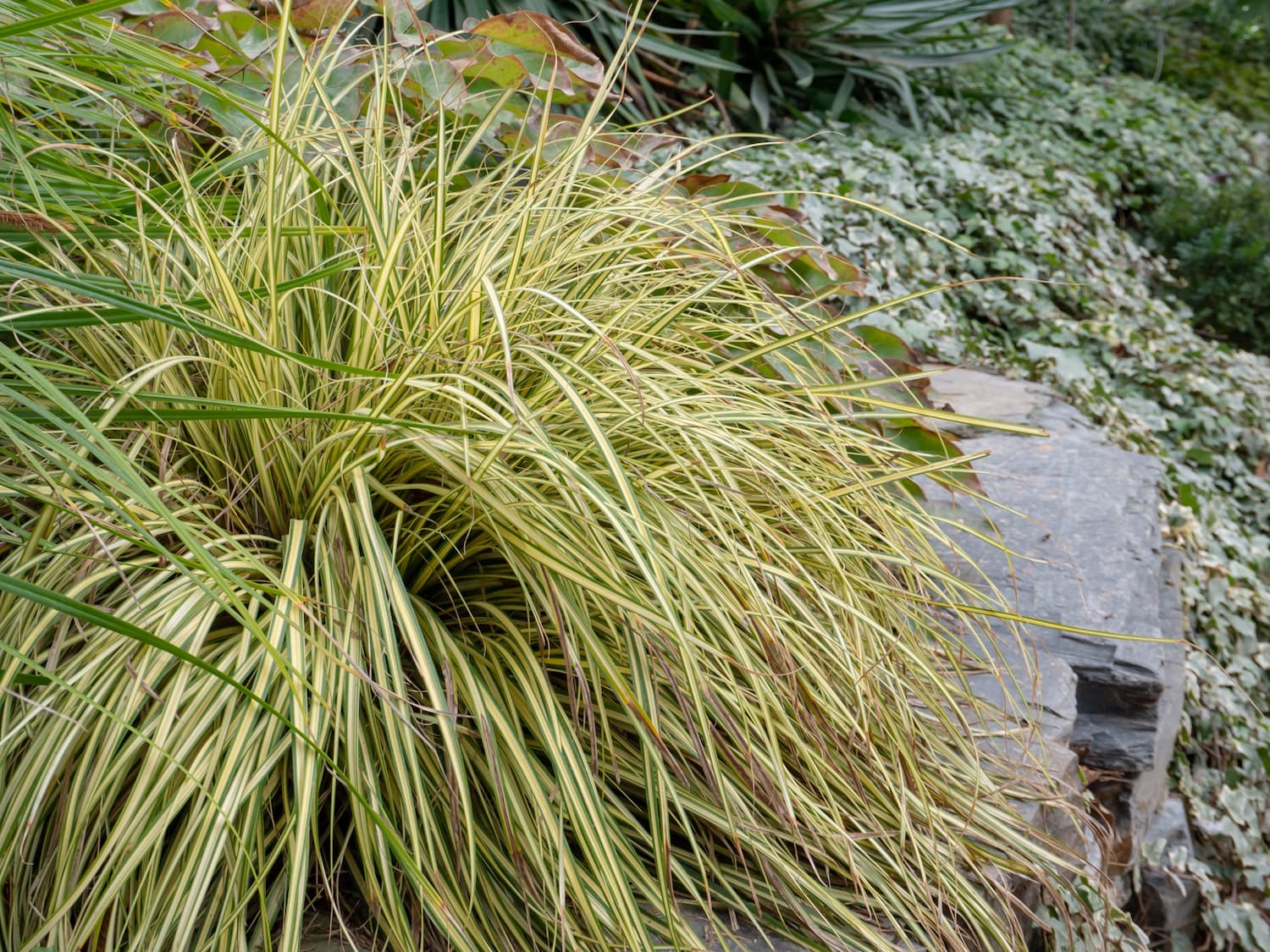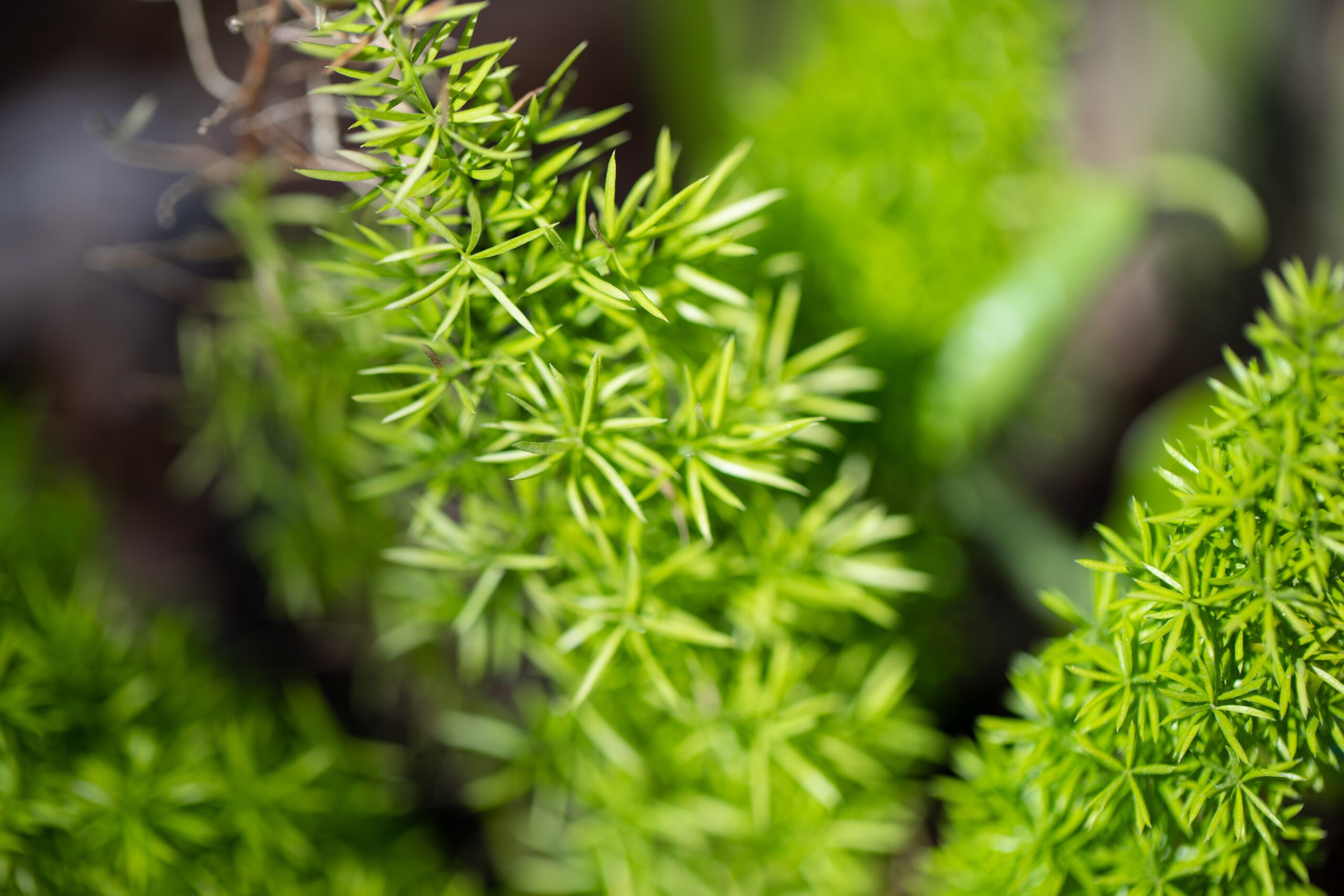The Basics of Foxtail Fern Care For any shade to part-shade garden, the ‘Myers’ foxtail…
How to Plant and Grow Sedge

In recent years, gardeners have discovered sedges as a tough, evergreen perennial option for many parts of the yard. Based on the appearance of the plant, sedges are often labeled as ornamental grass, but they are actually in their own plant family, Cyperaceae; many of the horticultural varieties in the retail trade are in the genus Carex. This is a large plant family, with many native to North America and some native to Texas. No matter what you call them, sedges are a versatile component in any garden and a great investment. Let’s look at the basics of selecting, growing, and caring for sedges.
Where to Plant Sedge
Before you buy, consider the location. Sedges do best with protection from full summer sun, so any spot with morning sun and afternoon shade or filtered light is ideal; sedges can even thrive in full shade, so they’re a great choice for under a tree or on the north and east sides of a property. Once established, they are fairly drought tolerant, but they look their best with regular watering. Sedges can even tolerate consistent moisture, so they’re a good choice for areas that are routinely damp.
Next, consider the size. Sedges have a naturally dense, mounding shape similar to many ornamental grasses, and they grow to be about as tall as wide. With a few exceptions, they seldom get more than 24″ tall. This smaller size and growth habit make them ideal for mass planting in a row along the front edge of a border or grouped under trees or taller shrubs.
Types of Sedge Plants
When you have the right location and determine the best size for that location, the fun of selecting the right sedge can begin. Sedges come in a wonderful range of colors and textures, and North Haven Gardens carries a wide variety (as available).
Prairie Fire™ sedge (Carex testacea’ Prairie Fire’) grows to 24″ tall and wide, with green-bronze foliage tipped with orange. These orange highlights intensify in sunnier locations and add a unique pop of color.
The EverColor® series, with cultivars like Everglow®, Everillo®, Eversheen®, and Everest®, offer a range of sizes and colors: bright lime to forest green and variegated foliage with cream or yellow stripes.
For gardens with a focus on Texas natives, Texas sedge (Carex texensis) and Cherokee sedge (Carex cherokeensis) are good choices. These hardy, long-lived perennials will become a foundational part of any landscape design, so it’s worth taking time to seek out the ideal selection for your planting.
Where to Plant Sedge
Standard “best practices” for planting perennials apply to planting sedges. If the soil has not been amended, incorporate compost to improve drainage and add low-level fertilization. Soak the plant in a root stimulator solution before planting, then again immediately after planting, and water monthly with a root stimulator for several months after planting.
Soil and Water Requirements
In addition, monitor the soil for moisture, and when the top inch of soil is dry, water slowly and deeply. Drip irrigation or soaker hoses are good options; never rely on an in-ground sprinkler system to irrigate perennials, shrubs, and trees. Maintain a layer of mulch around the plants; pine straw or pine bark is ideal because, like many shade-loving plants, sedges benefit from a slightly acidic growing environment.
When to Plant Sedges
Sedges can be planted at any time of the year, but spring and fall are ideal planting windows in the Metroplex and the seasons when selections are at their peak in nurseries.
Sedge Plant Care
Maintenance of sedges is simple. In early spring, cut back by at least ½ to remove old or dead foliage, then refresh mulch and fertilize with a mild, slightly acidic fertilizer – the Espoma® Holly Tone is a great choice. Follow up with a second fertilization in late summer.
Potting and Repotting
As the plants mature, they will slowly spread out and make a wider clump, and it’s easy to propagate sedges by dividing these clumps in early spring. After cutting the clump back, use a sharp shovel to strike down through the center of the clump and dig up half of the plant. Prepare a hole (as described above) for the transplant, then treat both plants like you would a new planting: a soak of root stimulator followed by a monthly watering with root stimulator, consistent watering in between, and a layer of mulch.
Sedge containers
One aspect where sedges really shine is in part-shade containers. The smaller size is ideal, and the evergreen nature of the plant lends a color accent year-round. It’s easy to design a color pot with a sedge, as the foundation plant is surrounded by colorful annuals like pansies and violas in fall and winter, alyssum and petunias in spring, and begonias and impatiens in summer.
Find Sedge Plants at North Haven Gardens
This versatile plant has a place in any part-shade garden, and Garden Advisors at North Haven Gardens are always available to hear about your garden plans, then help you select plants and share planting and growing tips to turn your garden into an oasis. Stop by – we’re open daily and ready to get you started with sedges.
Image Credit: Svetlana Zhukova, Shuttershock


